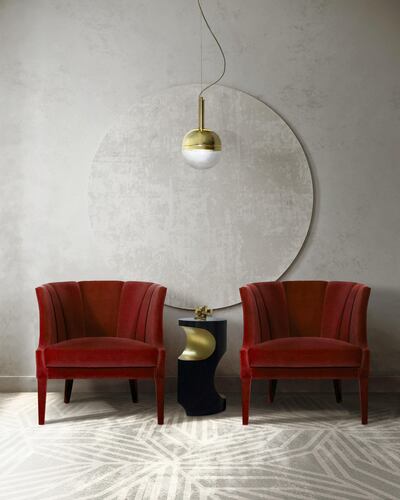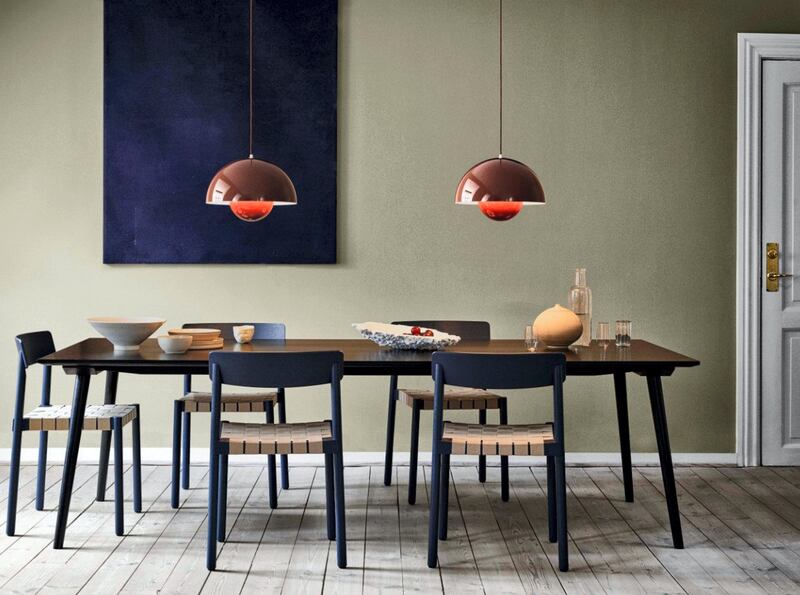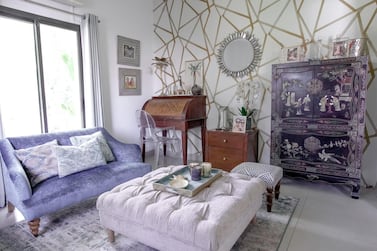How many lights do you have in your home? Or rather, how many types of lighting? Most of us will have an overhead light in each room, plus the odd table and floor lamps or perhaps some sconces on the wall. But there are many more options, each with a specific function for your home.
Broadly, lighting falls under three categories. There's ambient, which illuminates a space and allows you to see what you need to. There's accent, which helps you create different moods. And, finally, there's task, a smaller, more focused beam that supports particular functions within your home. Choose the right combination and you'll have a scheme that suits any occasion.
Overhead lighting
This is the baseline standard of ambient lighting – it’s a rare room that doesn’t have a light on, in or suspended from the ceiling. Yet, overhead is the least flattering type, and the least atmospheric. It is useful for universally illuminating a space, but can be too harsh by itself.
Using a dimmer switch can give you more control over the intensity and the effect it gives. You’ll also want to add one or more secondary lights to ensure you can create a more diffuse and even effect overall.

Atmospheric lighting
Whether positioned on the wall, floor or on top of furniture, using one or more sources that don't shine down from the ceiling helps create a much gentler look. You might use overhead and side lighting in combination to diffuse it more evenly around a room, or switch off the ceiling light altogether.
There are plenty of situations in which side lighting is more appealing. Think about watching a movie in your living room with an uplighter behind the screen and a wall light behind your head, rather than a ceiling pendant shining in your eyes and reflecting off the screen.
A dinner party is another example. Overhead lighting throws harsh shadows into the mix, highlighting every wrinkle and every flaw in your set-up. It’s far better to use side lamps – or even the soft glow of candles on the table, to soften both the style and ambience of your soiree.
Space-defining lighting
Open-plan living has been popular for years, but it has its downsides, including the need to visually "zone" different parts of the living space. Lighting is a sure-shot way to help with this.
For example, a series of pendant lights hanging over a dining table doesn't only help you see what you're eating, it also anchors the table within its space, making it look deliberately placed rather than arbitrarily so. Likewise, a standing lamp on the corner spot between two sofas, when positioned at right angles, can help outline a sitting area within an open-plan context.
Functional lighting
Chopping vegetables on the kitchen counter? You'll need spots under the overhead units so you don't accidentally slice your fingers. Reading a book in your favourite armchair? A directional floor lamp peering over your shoulder will reduce eye strain.

Whenever there's a need for you to focus on a task, you'll need a specialist light source. Think desk lamps to write or study by, picture lights that illuminate your artwork and even recessed spots that illuminate your way along a corridor – ideal if you're getting up for a glass of water in the night.
Smart lighting
These days lighting isn't just about illumination. Advances in technology mean that it can support our lives in much more subtle and useful ways. For example, you can use Alexa or other AI virtual assistant-controlled lightbulbs as a security measure, switching them on and off in a naturally random pattern from your phone while you're away to help create the illusion that you're at home. Alexa lightbulbs also make great alarm clocks for young children who can't yet tell the time; if they know that they're not allowed to get up until the Alexa light in their room goes on, they'll find it much easier to distinguish between the times to sleep and wake up.
When it comes to waking up yourself, why not invest in a sunshine alarm clock, such as the Lumie? These light up gradually, mimicking the dawn breaking and the sun rising, which is a much gentler way to ease yourself into the day than a shrill alarm clock. You can even get apps that sense where you are in your sleep cycle and wake you within a less deep sleep period to make the transition easier.
Natural lighting
This isn't a type of lighting you can buy in the shops, but it's nevertheless an important source to consider. While you can't control how brightly the sun shines (not that we need to worry about that much here), you can influence how much it affects your home.
If you have a space that doesn’t get a lot of natural light, keep your window dressing to a minimum and think about how you can bounce the light around. Mirrors and mirrored surfaces, as well as pale colours, will help maximise the light in your home, while solid, heavy pieces of furniture will only make it look darker.
By taking some time to plan your lighting scheme, you’ll be able to go from waking up gently to working at your desk to cooking a favourite meal or relaxing with friends, all with the best lighting for the job.






